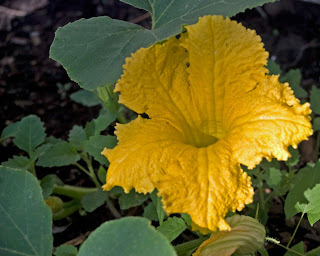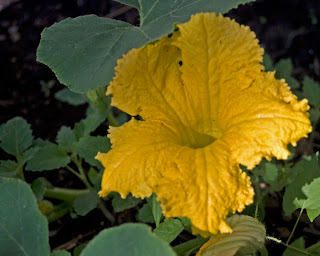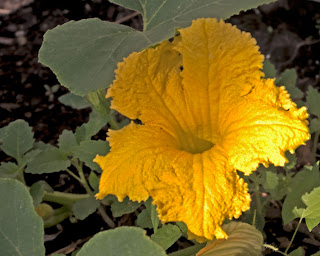 And Welcome to Butte, America
And Welcome to Butte, AmericaTaken 7/11/09 in Butte, Montana
NOTE PLEASE: Clicking on any photograph will open a full-screen version of that photo in a separate window. All links also open in a separate window. Also, should you be so inclined, you can see these photos and more taken at the Festival on my Picasa website.
We are the folk song army
Every one of us cares
We all hate poverty war and injustice
Unlike the rest of you squares.
There are innocuous folksongs, yeah,
But we regard 'em with scorn.
The folks who sing 'em have no social conscience,
Why, They don't even care if Jimmy crack corn.
--Tom Lehrer
Every one of us cares
We all hate poverty war and injustice
Unlike the rest of you squares.
There are innocuous folksongs, yeah,
But we regard 'em with scorn.
The folks who sing 'em have no social conscience,
Why, They don't even care if Jimmy crack corn.
--Tom Lehrer
To hear Tom Lehrer sing The Folk Song Army, click here!
If you're into folk music, then Butte, Montana was the place you wanted to be for the weekend of July 10-12. For the second year in a row, Butte was hosting the National Folk Festival, the 71st annual National Folk Festival, and close to 100,000 people showed up for the concerts, demonstrations, and just old fashioned fun. The sun was shining, the sky was blue, and the music was, well, hot. Kevin and I got up early Saturday morning and hit the road, arriving in Butte in plenty of time to park, ride the shuttle uptown, and find ourselves at the Quartz Street Stage in time for the opening act of the day, Wilho Saari, a renowned Kantele player from Naselle, Washington.
 Wilho Saari plays the Finnish Kantele
Wilho Saari plays the Finnish KanteleTaken 7/11/09 in Butte, Montana
The Kantele is Finland's national instrument, related to the Zither, and by tradition only the family patriarch is allowed to play the instrument. Mr. Saari waited until his father died to take up the Kantele. One wonders how these traditions come to be--and how a 50-year old man is able to start fresh learning the instrument upon the death of his own father.
That said, in 1985 when the good people of Montana sent me to Finland, one of the experiences I hoped to have was to hear the Kantele played. Alas, that was not to be, but right here, practically in my own backyard, I was able to see and hear an expert performance. Mr. Saari started his 45-minute set with a couple of hymns. He explained that his father had played every night after work. The hymns were lovely, and the sound sweet and clear. Yet I overheard a man across the aisle from me exclaim with more than a touch of sarcasm in his voice, "Well, this is certainly rousing." Indeed, the music I heard would make wonderful lullabies.
Now the biggest problem with attending one day of a three-day event is that you just can't see everything you'd like. There were seven stages set up around town, and there were events in every venue almost back to back. Another of the groups I wanted to hear was Otrov, a group of six young men from the upper mid-west. They play tamburitza music--a traditional Balkan style. Otrov was the opening act in "The Original" stage--a stage set up inside the headframe of The Original mine uptown. In fact, The Original was the mine directly across the street from our home when as I child I lived in Butte.
 Yes, there's a stage set up in the headframe
Yes, there's a stage set up in the headframe
The Original
Taken 7/11/09 in Butte, Montana
That said, in 1985 when the good people of Montana sent me to Finland, one of the experiences I hoped to have was to hear the Kantele played. Alas, that was not to be, but right here, practically in my own backyard, I was able to see and hear an expert performance. Mr. Saari started his 45-minute set with a couple of hymns. He explained that his father had played every night after work. The hymns were lovely, and the sound sweet and clear. Yet I overheard a man across the aisle from me exclaim with more than a touch of sarcasm in his voice, "Well, this is certainly rousing." Indeed, the music I heard would make wonderful lullabies.
Now the biggest problem with attending one day of a three-day event is that you just can't see everything you'd like. There were seven stages set up around town, and there were events in every venue almost back to back. Another of the groups I wanted to hear was Otrov, a group of six young men from the upper mid-west. They play tamburitza music--a traditional Balkan style. Otrov was the opening act in "The Original" stage--a stage set up inside the headframe of The Original mine uptown. In fact, The Original was the mine directly across the street from our home when as I child I lived in Butte.
 Yes, there's a stage set up in the headframe
Yes, there's a stage set up in the headframeThe Original
Taken 7/11/09 in Butte, Montana
After taking in roughly half of Mr. Saari's set, Kevin and I left Quartz Street and headed uphill to The Original. Unlike Quartz Street, there was no tent covering the audience, and no chairs unless you brought your own. Otrov's audience sat on the grass of the hillside rising above the stage which had been built inside the headframe of the mine. Now this music was rousing, and frankly, I'm not sure why people weren't dancing where they sat. Maybe the hot sun, the lack of shade, and the mile-high altitude all played a part in calming people.
Kevin and I wandered back down the hill--most of the streets in uptown Butte had been blocked off for pedestrian traffic--in search of Indian Tacos. We'd seen a booth down between the Granite Street Stage and the folk arts Marketplace, and frankly, I was ready for lunch. The line was long (I've noticed that the line for Indian Tacos is always long), and when we finally reached the front, we were told that they were out and it would take another 20 minutes before the next batch was ready. Well I love Indian Tacos, and rarely see them for sale in Missoula, so we decided to wait. That was just one of the mistakes we made while in Butte. Suffice it to say that the tacos were expensive and not nearly as good as I've come to expect.
 The audience for Otrov at "The Original"
The audience for Otrov at "The Original"
Note that this is just one of seven simultaneous performances
Taken 7/11/09 in Butte, Montana
The Marketplace next drew our attention. Divided into two sections, one area featured Native American arts and crafts while the other showcased the work of Montana craftsmen. Kevin and I were both drawn to a display of handcrafted wooden canoes built by Scott Enloe of Great Falls, Montana. I didn't get any pictures of Scott's work, but you'll see what we were lusting after by visiting Scott's website. As neither of had a spare $4,000, we were left to drool on the beautiful boat (which, truth to tell, I'd be almost afraid to put in the water).
By now we had missed most of the vocal traditions session, but were able to catch some of the North Bear drummers and singers from the Northern Cheyenne Reservation in Lame Deer, Montana. As an aside, I feel obliged to point out that the tribal college for the Northern Cheyenne is named Dull Knife, or Chief Dull Knife College, and one has to wonder why the Deer was Lame.
The Fiddle Masters followed Vocal Tradition, and much to my amazement, Kevin really wanted to hear this session. Well let's see, we had Michael Doucet of Beausoleil representing Cajun fiddle music. We had Brian Conway of Pride of New York representing the Irish fiddle music of Galway. Gary Harrison played traditional Mid-West style fiddle music, and Texas Shorty played the music of, you guessed it, Texas. The microphone passed from musician to musician and the hour passed quickly, almost as quickly as the tune Soldier's Joy, which the whole stage united to play in closing their set.
We stayed put in the Quartz Street Stage's tent, and watched in amazement as the area filled with spectators eager to watch the Massive Monkees. Who would have thought that there would be so many middle-aged white folk in Butte, Montana, eager to experience urban break dancing. I didn't get any pictures of the Seattle-based group because we were packed in so tightly that it was near impossible to move, let alone get in a good position for photos.
Following the Monkees, we were able to stay at Quartz Street for Chuck and Albert, two guys from Prince Edward Island, Canada, who played fiddle, percussion, sang, danced, joked, in French and English. Some of their antics were downright ludicrous, but such great fun that I was sorry to miss the end of their set.
Again, in order to move between stages, we needed to leave a little time, and Ethel Caffie-Austin and her singers were due to perform in the Granite Street Stage. Known as "West Virginia's First Lady of Gospel Music," Ms. Caffie-Austin was quick to tell the audience that the Mountain State (West Virginia) didn't have any mountains as grand as Montana's. I had really wanted to hear this performance, but at five in the afternoon, the sun was beating down on my head in the open seating area, and that, combined with the sound problems that had the music completely unbalanced, had me suggest to Kevin that it was time for us to hit the road home.
What all did we miss? A lot. We didn't hear Beausoleil, nor the Pride of New York. We missed the Mariachis and the Melody of China. We didn't hear Sierra Hull--a protegé of Allison Krause, nor did we experience any of the Steel String Guitar Masters. Actually there's way too much stuff that we missed, and I couldn't begin to tell you about all of it anyway.
The National Folk Festival got its start in St. Louis in 1934. It visits a town for three consecutive years, then moves on. As I understand it, this was the first time the Festival has been held in the West. Last year the Festival drew 70,000 people to Butte, once the largest city in Montana with fully 1/4 of the state's population back in 1910. Today the story is different. Butte has a population around 35,000, and for the city to throw a party that doubles, or even triples the number of people on the street is nothing short of miraculous. Next year will be Butte's third and last year for hosting the festival, and it's not too late to get your lodging reserved. This year there wasn't a room available in a 60 mile radius. All the events are free and open to the public, but bring your card for the food, drink and CD sales. You won't regret visiting the Mining City, Butte America in July, 2010--July 9th, 10th, and 11th to be specific.
Kevin and I wandered back down the hill--most of the streets in uptown Butte had been blocked off for pedestrian traffic--in search of Indian Tacos. We'd seen a booth down between the Granite Street Stage and the folk arts Marketplace, and frankly, I was ready for lunch. The line was long (I've noticed that the line for Indian Tacos is always long), and when we finally reached the front, we were told that they were out and it would take another 20 minutes before the next batch was ready. Well I love Indian Tacos, and rarely see them for sale in Missoula, so we decided to wait. That was just one of the mistakes we made while in Butte. Suffice it to say that the tacos were expensive and not nearly as good as I've come to expect.
 The audience for Otrov at "The Original"
The audience for Otrov at "The Original"Note that this is just one of seven simultaneous performances
Taken 7/11/09 in Butte, Montana
The Marketplace next drew our attention. Divided into two sections, one area featured Native American arts and crafts while the other showcased the work of Montana craftsmen. Kevin and I were both drawn to a display of handcrafted wooden canoes built by Scott Enloe of Great Falls, Montana. I didn't get any pictures of Scott's work, but you'll see what we were lusting after by visiting Scott's website. As neither of had a spare $4,000, we were left to drool on the beautiful boat (which, truth to tell, I'd be almost afraid to put in the water).
By now we had missed most of the vocal traditions session, but were able to catch some of the North Bear drummers and singers from the Northern Cheyenne Reservation in Lame Deer, Montana. As an aside, I feel obliged to point out that the tribal college for the Northern Cheyenne is named Dull Knife, or Chief Dull Knife College, and one has to wonder why the Deer was Lame.
The Fiddle Masters followed Vocal Tradition, and much to my amazement, Kevin really wanted to hear this session. Well let's see, we had Michael Doucet of Beausoleil representing Cajun fiddle music. We had Brian Conway of Pride of New York representing the Irish fiddle music of Galway. Gary Harrison played traditional Mid-West style fiddle music, and Texas Shorty played the music of, you guessed it, Texas. The microphone passed from musician to musician and the hour passed quickly, almost as quickly as the tune Soldier's Joy, which the whole stage united to play in closing their set.
We stayed put in the Quartz Street Stage's tent, and watched in amazement as the area filled with spectators eager to watch the Massive Monkees. Who would have thought that there would be so many middle-aged white folk in Butte, Montana, eager to experience urban break dancing. I didn't get any pictures of the Seattle-based group because we were packed in so tightly that it was near impossible to move, let alone get in a good position for photos.
Following the Monkees, we were able to stay at Quartz Street for Chuck and Albert, two guys from Prince Edward Island, Canada, who played fiddle, percussion, sang, danced, joked, in French and English. Some of their antics were downright ludicrous, but such great fun that I was sorry to miss the end of their set.
Again, in order to move between stages, we needed to leave a little time, and Ethel Caffie-Austin and her singers were due to perform in the Granite Street Stage. Known as "West Virginia's First Lady of Gospel Music," Ms. Caffie-Austin was quick to tell the audience that the Mountain State (West Virginia) didn't have any mountains as grand as Montana's. I had really wanted to hear this performance, but at five in the afternoon, the sun was beating down on my head in the open seating area, and that, combined with the sound problems that had the music completely unbalanced, had me suggest to Kevin that it was time for us to hit the road home.
What all did we miss? A lot. We didn't hear Beausoleil, nor the Pride of New York. We missed the Mariachis and the Melody of China. We didn't hear Sierra Hull--a protegé of Allison Krause, nor did we experience any of the Steel String Guitar Masters. Actually there's way too much stuff that we missed, and I couldn't begin to tell you about all of it anyway.
The National Folk Festival got its start in St. Louis in 1934. It visits a town for three consecutive years, then moves on. As I understand it, this was the first time the Festival has been held in the West. Last year the Festival drew 70,000 people to Butte, once the largest city in Montana with fully 1/4 of the state's population back in 1910. Today the story is different. Butte has a population around 35,000, and for the city to throw a party that doubles, or even triples the number of people on the street is nothing short of miraculous. Next year will be Butte's third and last year for hosting the festival, and it's not too late to get your lodging reserved. This year there wasn't a room available in a 60 mile radius. All the events are free and open to the public, but bring your card for the food, drink and CD sales. You won't regret visiting the Mining City, Butte America in July, 2010--July 9th, 10th, and 11th to be specific.

















